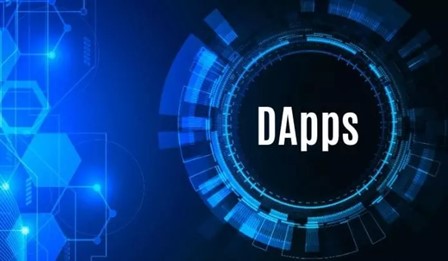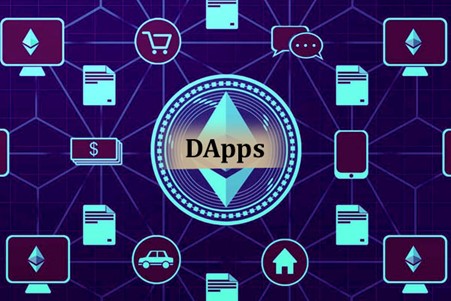Understanding Dapps: What They Are and How They Work :
Decentralized applications, or dapps, are a new type of application that leverages blockchain technology to create decentralized systems. Dapps are designed to be open-source, transparent, and secure, and they have the potential to transform the way we interact with software and services.

What is a Dapp ?
A dapp is an application that is built on top of a decentralized network, such as the Ethereum blockchain. Unlike traditional applications, dapps are not controlled by a central authority. Instead, they run on a distributed network of computers, known as nodes, that work together to process transactions and maintain the integrity of the network.
Dapps are designed to be self-governing and self-sustaining. They are typically open-source, which means that anyone can view and contribute to the code base. They are also transparent, which means that all transactions and operations are visible on the blockchain.
How do Dapps Work?
Dapps are built on top of a blockchain platform, such as Ethereum or EOS (Electro-Optical System). These platforms provide a set of tools and protocols that developers can use to create decentralized applications.
Dapps are typically composed of two parts: a frontend and a backend. The frontend is the user interface that allows users to interact with the dapp. The backend is the smart contract code that runs on the blockchain.
Smart contracts are self-executing contracts that automatically enforce the terms of an agreement. They are coded in a programming language, such as Solidity, and are stored on the blockchain. When certain conditions are met, the smart contract will execute and perform its specified function.
Dapps use smart contracts to automate the execution of transactions and eliminate the need for intermediaries. For example, a dapp could be built to facilitate a peer-to-peer lending platform. Users could lend and borrow money from each other, with the terms of the loan enforced by a smart contract.
Advantages of Dapps :
Dapps offer several advantages over traditional applications. Firstly, they are decentralized, which means that they are not controlled by a central authority. This makes them more resistant to censorship and manipulation.
Secondly, dapps are transparent. All transactions and operations are visible on the blockchain, which means that there is a high level of transparency and accountability.
Thirdly, dapps are self-governing and self-sustaining. They do not rely on a central authority to operate, which means that they can continue to function even if the developer stops working on the project.

Challenges of Dapps :
Despite their advantages, dapps also face several challenges. Firstly, they are still relatively new, and there is a lack of standardization in the industry. This means that developers may face challenges in creating interoperable dapps that can work together seamlessly.
Secondly, dapps are currently limited by the scalability of blockchain technology. As the number of users on the network increases, the blockchain can become congested, leading to slower transaction times and higher fees.
Conclusion
Dapps have the potential to transform the way we interact with software and services. They are decentralized, transparent, and self-sustaining, which makes them more resistant to censorship and manipulation. However, they still face several challenges, including a lack of standardization and scalability issues. As the technology continues to develop, we can expect to see more innovative dapps that offer new and exciting use cases.
